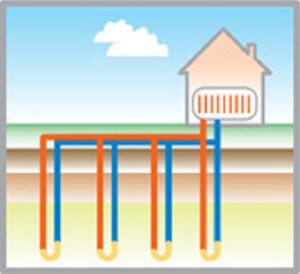 John Findlay, Director of Carbon Zero Consulting Ltd tells us why…
John Findlay, Director of Carbon Zero Consulting Ltd tells us why…
Despite everything, there has never been a better time to install a ground source heat pump.
The UK does not have targets for the increased provision of renewable heat; rather a requirement to lower carbon emissions across the board. The UK’s fifth carbon budget, due for parliamentary approval this year, recommends a 57% reduction in UK emissions from 2028-2032 on 1990 levels.
The committee for climate change (CCC) recently commented that ‘Heating and hot water for UK buildings make up around 40% of our energy consumption and 20% of our greenhouse gas emissions. It will be necessary to largely eliminate these emissions by around 2050 to meet the targets in the Climate Change Act and to maintain the UK contribution to the Paris Agreement. Progress to date has stalled. The Government needs a credible new strategy and a much stronger policy framework for buildings’ decarbonisation.
Progress has indeed stalled since the Brexit referendum, cabinet reshuffle, scrapping of DECC and absorption of all things carbon/renewable into the catchily named new department of ‘Business, Energy and Industrial Strategy’ (DBEIS). It is likely that we will hear a little more about the fate of the RHI and renewable heat over the next few weeks. We await with great interest what BEIS have taken six months to mull-over!
The UK’s long term aim for the provision of heating for domestic and commercial premises is to utilise low carbon (and ultimately zero carbon) electricity to provide renewable heat via heat pumps. Great strides have already been taken to reduce the ‘carbon intensity’ of mains electricity. Coal, the worst possible option for emissions of CO2, has rapidly become a minor contributor to our mix of power sources with gas, nuclear and renewables providing the bulk.
Just three years ago, the carbon intensity of grid electricity was often in excess of 500g of CO2 for every kilowatt-hour produced (500gCO2/kWh). Now, with increased contributions from renewables and gas, the average has fallen significantly – the recent Carbon Trust figure being 412gCO2. DEFRA estimates this will drop to 250gCO2 by 2020 as more renewables are brought on line, and eventually more nuclear – although I fear Hinckley and other nuclear projects have further hurdles to jump before they power-up your heat pump.
The major ‘fuel’ source for a GSHP is, of course, the solar energy stored in the ground. A well-designed borehole or trenched ground array will provide renewable heat for 100 years or more – provided nobody digs it up. As such a ground array acts as a very long term capital asset for the system owner. With the significant reduction of carbon emissions from electricity production, there has never been a better time to install a ground source heat pump.
There is ongoing technical demand and client desire to utilise GSHP systems, but in a government incentivised market there is an urgent and absolute requirement for clarity and certainty from DBEIS.

